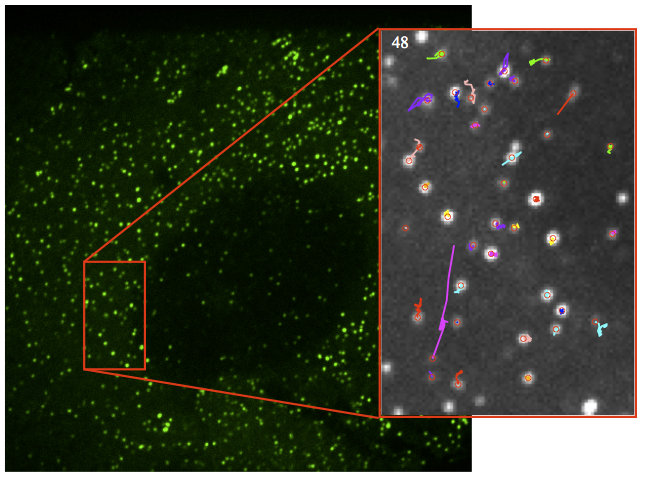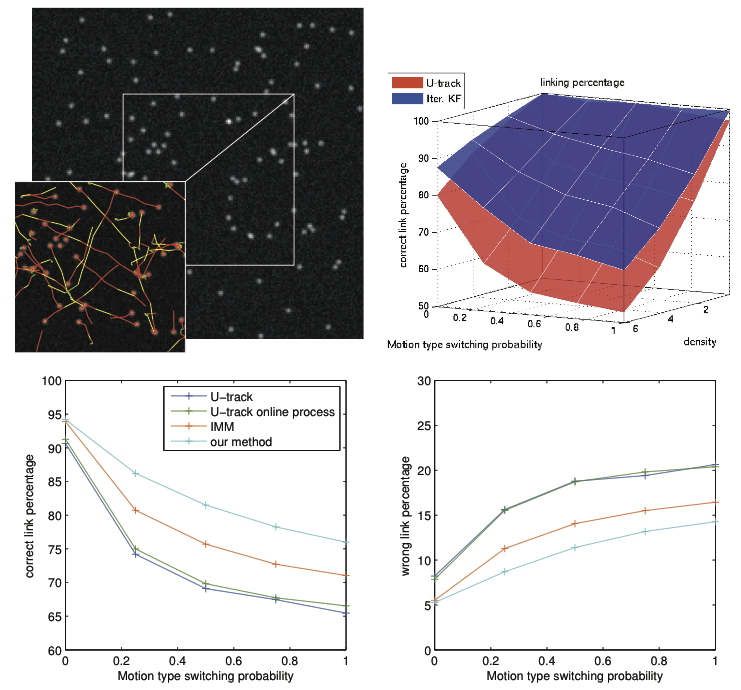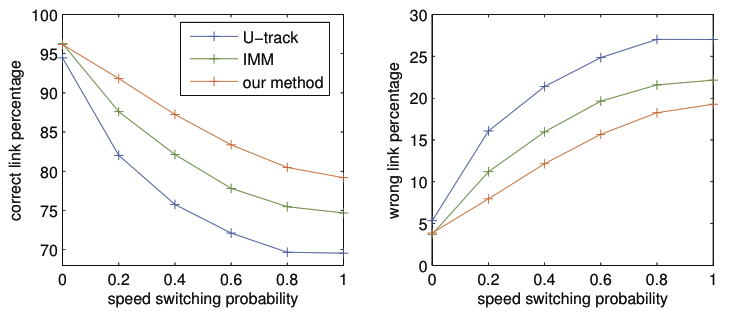Section: New Results
Probabilistic Tracking of fluorescent objects
Participants : Philippe Roudot, Charles Kervrann.
|
Image tracking of fluorescent objects, from labeled molecules to organelles and entire cells, is an essential task in the analysis of cellular functions. During the last decade, several algorithms have been tailored to cope with different types of cellular and subcellular motion down to Brownian single molecule behavior [8] . One of the remaining big challenges in this area of technology development has been the tracking of extremely heterogeneous movements of objects in crowded scenes. We tested several state-of-the-art algorithms [36] , [40] to follow dense populations of diffusing particles, which suddenly change to directed motion. A frequent cellular scenario with this property is the jerky motion of vesicles and viruses switching between cytoplasmic diffusion and motor-mediated, fast displacements (see Fig. 14 ).
|
These switches are particularly challenging to detect because they occur rarely. The presence of numerous detected objects in the expected range of particle displacements makes the tracking ambiguous and induces wrong associations. Lowering the ambiguity by reducing the search range, on the other hand, is not an option, as this would increase the rate of false negatives.
We first explored the existing methods in the literature to analyze their strenghts and weakness for tracking objects with heterogeneous motion and high density. Based on the conclusion we draw, we proposed a new method build on the U-track platform [40] . More specifically, we propose an interacting multiple state model that exploits recursive tracking in multiple rounds in forward and backward temporal directions. As a result, it achieves convergence of the instantaneous speed estimate time-point-by-time-point. This allows us to predict and recover abrupt transitions from freely or confined diffusive to directed motion. To address the issue of a particle that disappears as a neighboring particle appears in the same image and thus to better detect track termination, we also exploit this recursive tracking by proposing a locally adaptive on-line estimation of the search window radius for assignment (a.k.a. gating), while most of state-of-the-art algorithms propose only a global search window radius or weak per-track search radius estimations. We have shown on simulated data that our method outperforms state-of-the-art algorithms that model motion heterogeneity on different scenarios, e.g. heterogeneous motion type (see Figure 15 ) and speed heterogeneity (see Fig. 16 ), while keeping the computational cost of a deterministic method (10% overhead with respect to U-track).
Partners: Gaudenz Danuser (Harvard Medical School, Boston, USA)





